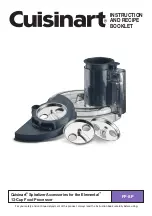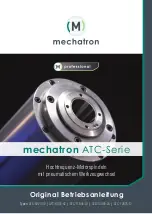
•
Print at slower speeds. This will cause less static
buildup and make the marks less noticeable.
•
Add a 1% or higher fill color for CMYK in white areas;
the exact amount to be determined by testing in your
working environment. It has been demonstrated in a
30% RH environment that filling white areas with a
1% dot for all 4 chanels, C, M, Y, and K, will virtually
remove the marks. The resulting light gray in white
areas is not objectionable, especially when prints are
trimmed so that no unprinted media is visible as a
reference. The fill color can be added in the
application that the file was created in or within your
RIP software. In ONYX POSTERSHOP, simply use the
"Replace Color" tool, select white, and add 1% to all 4
colors.
Caution
Caution
When using film based medias on printers in very low
humidity conditions, 30% or lower, static charges may
be enough to damage your printer. It is not
recommended that you print in these conditions. Be
sure to follow your printer manufacturers guidelines for
operating conditions, which are especially critical when
using film based medias.
HANDLING
All inkjet media must be handled with care before and
after printing to prevent damage to the ink receiving
layer and printed images. Use the following guidelines,
your experience, and common sense for the proper care
of your media.
•
Store unused media in its original packaging, using
the core-plugs and plastic sleeves.
•
Allow media to acclimate to your environmental
conditions for at least 24 hours before use.
•
KODAK inkjet media is rolled printable side out.
Avoid touching the printable side by handling by the
edges of the roll.
•
Wear cotton gloves when handling media to avoid
scratches, abrasions and fingerprints from moisture
and oils on your hands.
•
Do not allow the media to come into contact with
moisture. Moisture will damage many types of inkjet
medias before and after printing.
•
Avoid handling, trimming, laminating or other
finishing until prints are completely dry. Dry times
will vary based on media type, ink type and
environmental conditions.
•
Do not fold, bend or crease media or damage may
occur to the ink receiving layer.
•
Do not allow the surface of the media to come into
contact with itself or another inkjet media.
•
Use media only in recommended operating
conditions—see "Physical Characteristics" section.
Curl
Most types of roll-based inkjet media will exhibit some
amount of curl, either toward the base side or toward
the print side. This will vary based on media type and
environmental conditions. Some media will curl more in
low humidity environments and others in high humidity
environments. Also, media may curl more towards the
core or end of the roll due to "roll memory."
Although curl is mainly an issue when printing, it can
also have an impact on laminating and other finishing
procedures. Follow these guidelines, and use your
experience and common sense to avoid issues caused
by curl.
When printing:
•
Advance media several inches past the print platen
before starting a print job.
•
Add weights or clips to the leading edge of the
media.
•
Attach media to the printer’s take-up spool before
starting printing.
•
Adjust vacuum settings accordingly on printers
equipped with variable media vacuum settings.
•
Adjust heater and dryer settings on equipped printers
to obtain optimum conditions to ensure flat media.
See printer owners' manual for their
recommendations.
During finishing:
•
Reverse wind media, when completely dry, to
counteract roll memory.
•
Do not allow media to remain rolled for extended
periods of time.
•
Rough cut prints and lay them flat before laminating.
4
٠
KODAK Universal Backlit Film / 8mil E-2643


























